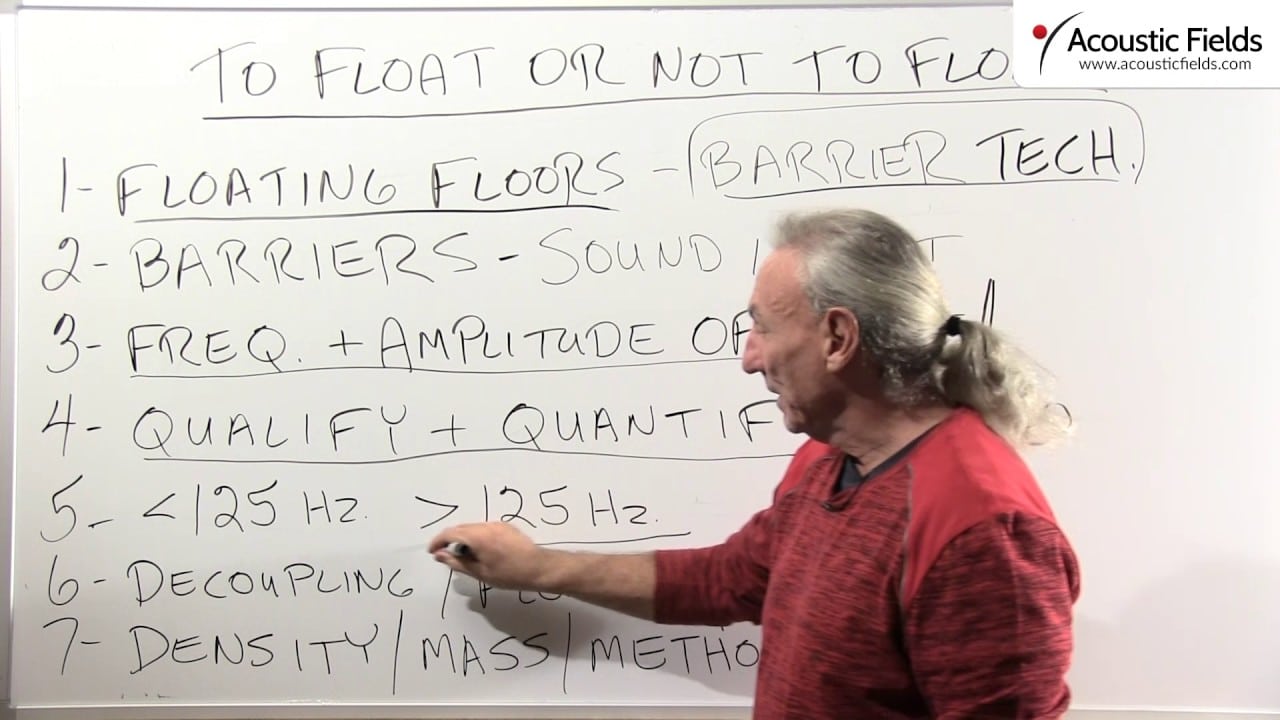Today we’re going to talk about to float or not to float not a boat, not a marine craft but floors. Because I get a lot of calls from people say well I want to float the floor and I said okay, why do you want to do that and they really can’t tell me other than the fact that they’ve heard that that’s a good idea. Well, in acoustics if you’ve heard it’s a good idea you need to do a little bit more research because there’s a lot of misinformation out there, there’s a lot of half-truths, a lot of hyperbole, a lot of innuendo.
So, you really want to put science first and opinion and the literature second, do your own research okay. Floating floors, what really is a floating floor? Well it’s not really floating, it’s just raised above the existing structure okay and what is it? Well, we know from past videos that it’s a barrier technology, so what do we do with a barrier? If we have a noise source here and we’re here and we don’t want to hear the noise, we build a barrier. Now the barrier must be in relationship to the amount and level of the noise, we won’t put up a curtain to stop the noise from a garbage truck; it won’t work because the barrier or the curtain is not designed at the right frequency and amplitude of the noise. The frequency and amplitude of the noise must be designed into the barrier or else you’re just wasting time, money and expensive real estate. So if you’re going to float your floor, you want to make sure that the noise you’re creating in the room won’t get to the structure below or the noise in the structure below won’t get up into your room.
So, you construct a barrier okay and one of the ways to do that is a floating floor but you must qualify and quantify the frequencies that you’re dealing with and this can only be done through measurements and we do what’s called a 7-day Measurement Noise Time Study. So, what are we looking for in that time study and we have a service that we offer for that that you can even do yourself with iPhone apps that I’ve come up with. So, what are we to really trying to do here? We’re really looking at two ends of a spectrum we’re looking at energy below 125 hertz and we’re looking at energy above 125 Hz because this is the frequency break point for how thick the wall is, it could mean the different this could be four inches if we’re above 125 Hz if we’re below 125 Hz this wall could go up to 12 inches.
So, there’s big difference in thickness, there’s a big difference in materials that you use, there’s a big difference in the way you build it. So first we have to know what our problem is, how big it is and then we have to build the right barrier to satisfy the requirements of the noise not what we think is necessary. So floating floors are very expensive so make sure you have the noise that you have to stop with the floating floor. Now, is the floating for the only thing that you can do? No, there are other things you can do to stop noise and we’ll get into that with another video. So I hope this helps the floater not to float, first let’s find out if we need to by measuring and seeing where our problems are and then we can go from there.
—
This is an unedited transcript from our video series from Acoustic Fields. There will be some errors in grammar and sentence structure that occur during this translation process.
For complete understanding and comprehension, please view the video which is included in this text. For any additional information regarding this topic or others relating to room acoustics, please contact us directly at:
P: 520 – 392 – 9486







